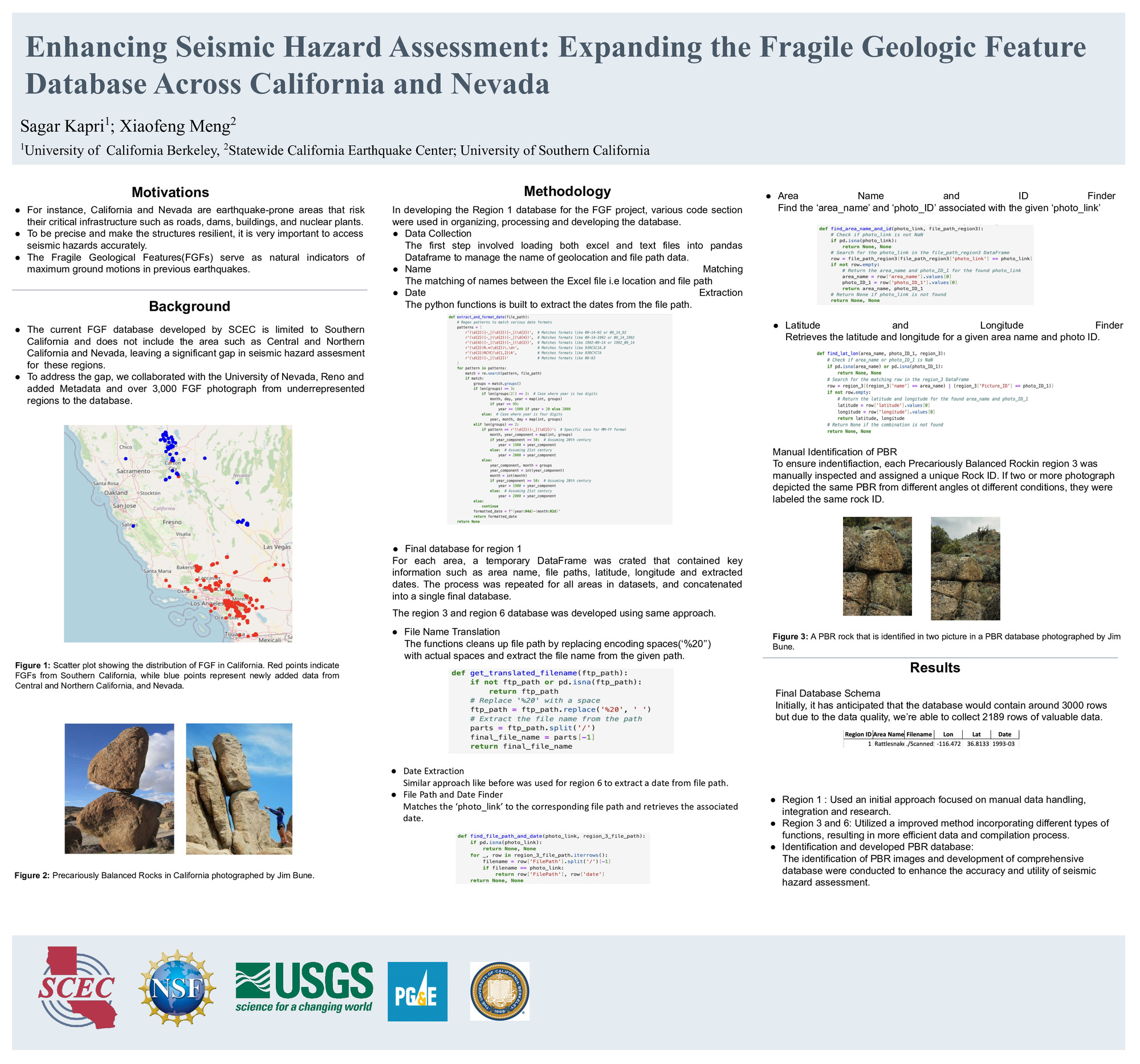Group B, Poster #110, Earthquake Geology
Expanding a Centralized Fragile Geologic Feature Database for Seismic Hazard Assessment
Poster Image:

Poster Presentation
2024 SCEC Annual Meeting, Poster #110, SCEC Contribution #13996 VIEW PDF
Earthquake-prone regions face significant challenges in accurately assessing seismic hazards. A centralized and comprehensive database for Fragile Geological Features (FGFs), which are susceptible to seismic damage, could help determine the upper-bound ground motions that are essential for ensuring the safety and resilience of infrastructure such as roads, dams, buildings, and nuclear power plants.
The project is the continuation of the effort to address the gap by developing a centralized FGF database aimed at providing easy access to critical information for understanding the impact of earthquakes on infrastructure. The previous FGF database only includes features in southern California. We expanded the FGF database to central California, northern California, and Nevada, based on the metadata and pictures provided by colleagues from University of Nevada, Reno. The database expansion process involved two components. The first component leverages the pandas library for comprehensive data preprocessing, ensuring that diverse datasets from various sources were standardized into a cohesive format suitable for efficient database management. The second component is the manual identification of FGFs in over 3000 pictures.
This project leads to significant progress in enhancing seismic hazard assessment capabilities in the state of California and Nevada. By consolidating diverse datasets and enabling efficient data retrieval and analysis, the expanded FGF database provides researchers and infrastructure planners with essential tools for informed decision-making and risk mitigation strategies.
In conclusion, the establishment of a centralized FGF database represents a critical advancement in earthquake research and infrastructure resilience. It empowers stakeholders to better predict and mitigate the impact of seismic events, thereby contributing to safer and more resilient infrastructure development in earthquake-prone regions.
The project is the continuation of the effort to address the gap by developing a centralized FGF database aimed at providing easy access to critical information for understanding the impact of earthquakes on infrastructure. The previous FGF database only includes features in southern California. We expanded the FGF database to central California, northern California, and Nevada, based on the metadata and pictures provided by colleagues from University of Nevada, Reno. The database expansion process involved two components. The first component leverages the pandas library for comprehensive data preprocessing, ensuring that diverse datasets from various sources were standardized into a cohesive format suitable for efficient database management. The second component is the manual identification of FGFs in over 3000 pictures.
This project leads to significant progress in enhancing seismic hazard assessment capabilities in the state of California and Nevada. By consolidating diverse datasets and enabling efficient data retrieval and analysis, the expanded FGF database provides researchers and infrastructure planners with essential tools for informed decision-making and risk mitigation strategies.
In conclusion, the establishment of a centralized FGF database represents a critical advancement in earthquake research and infrastructure resilience. It empowers stakeholders to better predict and mitigate the impact of seismic events, thereby contributing to safer and more resilient infrastructure development in earthquake-prone regions.






































